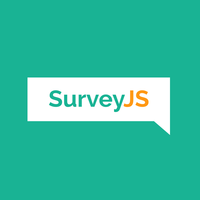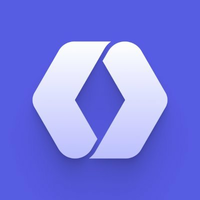Description
View the website at nodaljs.com.
Nodal is a web server and opinionated framework for building
data manipulation-centric (Create Read Update Destroy) API services in Node.js for
web, mobile or IoT apps.
Nodal alternatives and similar modules
Based on the "Web Frameworks" category.
Alternatively, view Nodal alternatives based on common mentions on social networks and blogs.
-
Nest
A progressive Node.js framework for building efficient, scalable, and enterprise-grade server-side applications with TypeScript/JavaScript 🚀 -
Nuxt.js
DISCONTINUED. Nuxt is an intuitive and extendable way to create type-safe, performant and production-grade full-stack web apps and websites with Vue 3. [Moved to: https://github.com/nuxt/nuxt] -
AdonisJs Framework
AdonisJS is a TypeScript-first web framework for building web apps and API servers. It comes with support for testing, modern tooling, an ecosystem of official packages, and more. -
Quick Start
🍔 A Node.js Serverless Framework for front-end/full-stack developers. Build the application for next decade. Works on AWS, Alibaba Cloud, Tencent Cloud and traditional VM/Container. Super easy integrate with React and Vue. 🌈 -
Derby
MVC framework making it easy to write realtime, collaborative applications that run in both Node.js and browsers -
ActionHero
Actionhero is a realtime multi-transport nodejs API Server with integrated cluster capabilities and delayed tasks -
NestJS REST API boilerplate
NestJS boilerplate. Auth, TypeORM, Mongoose, Postgres, MongoDB, Mailing, I18N, Docker. -
Lad
Node.js framework made by a former @expressjs TC and @koajs team member. Built for @forwardemail, @spamscanner, @breejs, @cabinjs, and @lassjs. -
Marble.js
Marble.js - functional reactive Node.js framework for building server-side applications, based on TypeScript and RxJS. -
FoalTS
Full-featured Node.js framework, with no complexity. 🚀 Simple and easy to use, TypeScript-based and well-documented. -
lychee.js
DISCONTINUED. :seedling: Next-Gen AI-Assisted Isomorphic Application Engine for Embedded, Console, Mobile, Server and Desktop -
Hemera
🔬 Writing reliable & fault-tolerant microservices in Node.js https://hemerajs.github.io/hemera/ -
Catberry
Catberry is an isomorphic framework for building universal front-end apps using components, Flux architecture and progressive rendering. -
dawson-cli
DISCONTINUED. A serverless web framework for Node.js on AWS (CloudFormation, CloudFront, API Gateway, Lambda) -
AdonisJs Application
DISCONTINUED. This repo is the pre-configured project structure to be used for creating ambitious web servers using AdonisJs. -
QueryQL
Easily add filtering, sorting, and pagination to your Node.js REST API through your old friend: the query string! -
express-version-route
A Node.js express middleware that implements API versioning for route controllers -
FortJs
A feature-rich Node.js web framework designed for building powerful, scalable, and maintainable web applications. -
Prim+RPC
Easy-to-understand, type-safe, transport-agnostic RPC/IPC for JavaScript, supporting callbacks, batching, file handling, custom serialization, and more.
SurveyJS - Open-Source JSON Form Builder to Create Dynamic Forms Right in Your App

* Code Quality Rankings and insights are calculated and provided by Lumnify.
They vary from L1 to L5 with "L5" being the highest.
Do you think we are missing an alternative of Nodal or a related project?
Popular Comparisons
README
Nodal
API Services Made Easy with Node.js
[Nodal Logo](./nodal.png)
View the website at nodaljs.com.
Nodal is a web server and opinionated framework for building data manipulation-centric (Create Read Update Destroy) API services in Node.js for web, mobile or IoT apps.
Why Nodal?
Hello, Nodal — Building Node.js Servers for Everybody is our first blog post that helps you get acquainted with the reasons behind the creation of the framework. :)
Post Parse Prototyping is also a fantastic read explaining the benefits of Nodal for quick and easy mobile / IoT backend development.
Overview
Nodal is built upon an ideology of a robust, scalable architecture for data storage and retrieval APIs. It is an opinionated, explicit, idiomatic and highly-extensible full-service framework that takes care of all of the hard decisions for you and your team. This allows you to focus on creating an effective product in a short timespan while minimizing technical debt.
Nodal servers are not meant to be monoliths. They're stateless and distributed, meant to service your needs of interfacing with your data layer effortlessly. While you can output any data format with Nodal, it's recommended you offload things like static page rendering to other optimized services like CDNs.
Check out the first Nodal Screencast here.
Stateless Dogma
It's important to note that Nodal is meant for stateless API services. This means you should not rely on memory within a specific process to serve multiple requests, and Nodal will use process clustering (even in development) to actively discourage this practice. If you need to work with unstructured data for rapid prototyping, connect Nodal to a PostgreSQL database and use the "JSON" field type. You'll find yourself encountering a lot of trouble if you start trying to use in-process memory across different requests.
Remember: one input, one output. Side effects dealing with model state should be managed via your Database. Nodal should not be used for streaming (long poll) requests and the HTTP request and response objects are intentionally obfuscated.
This also means you can not rely on socket connections. If you need to incorporate realtime functionality in your application, there should be a separate server responsible for this. It can interface with your Nodal API server and even receive events from it, but your API server should never have a stateful (prolonged) connection with any client.
Getting Started
Getting started with Nodal is easy.
- Download and install the newest Node 6.x version from nodejs.org
- Open terminal, and type
npm install nodal -g. (If you get an error, runsudo npm install nodal -gor fix permissions permanently by following these directions - Using your terminal, visit your projects folder. Perhaps with
cd ~. - Run
nodal new. - Follow the on screen instructions, enter your new project directory and type
nodal s.
That's it! Your Nodal webserver is up and running.
Hooking Up Your Database
Once Nodal is up and running, it's likely that you'll want to connect your project to a database. Nodal comes packaged with Migrations, a Query Composer and full PostgreSQL integration.
First you'll need to install PostgreSQL. OS X users, I recommend using Postgres.app for your development environment.
Once you've installed Postgres, make sure to run:
$ createuser postgres -s
To create a default postgres superuser with no password. (Default for Nodal's configuration.)
To begin using your database, start with:
$ nodal db:create
To create the database and then,
$ nodal db:prepare
To prepare for migrations.
From here, nodal db:migrate runs all pending migrations and nodal db:rollback
will roll back migrations, one at a time by default.
Server Types
Nodal works best when you follow its ideology, and that means creating a new service to solve specific Problem Domains of your application and business.
The main three suggestions are Branding Server, API Server and Application Server.
Nodal's core competency is building API servers. We do, however, also have a project called dotcom for building Branding Servers (search engine optimized server-generated pages). More on this soon.
API Server
Create an API server using Nodal's Models, PostgreSQL integration, built-in JSON API formatting, and Query Composer (ORM). Bi-directional migrations are packaged with Nodal, meaning you can maintain the integrity of your data. User (including password) and OAuth AccessToken models and controllers are pre-built for you and can be added easily to your project.
Packaged with Nodal are workers, scheduling modules, and much more for all of your data needs.
We can look at what an API Controller might look like for, say, blog posts:
class BlogPostsController extends Nodal.Controller {
index() {
BlogPost.query()
.join('user')
.join('comments')
.where(this.params.query)
.end((err, blogPosts) => {
this.respond(err || blogPosts);
});
}
show() {
BlogPost.find(this.params.route.id, (err, blogPost) => this.respond(err || blogPost));
}
create() {
BlogPost.create(params.body, (err, blogPost) => this.respond(err || blogPost));
}
update() {
BlogPost.update(this.params.route.id, params.body, (err, blogPost) => this.respond(err || blogPost));
}
destroy() {
BlogPost.destroy(this.params.route.id, (err, blogPost) => this.respond(err || blogPost));
}
}
Beginner's Guide
You'll be able to learn more about Nodal at nodaljs.com.
Documentation
Check out the website at nodaljs.com.
Roadmap
View the roadmap at [ROADMAP.md](./ROADMAP.md).
About
Nodal is under active development and maintained by Keith Horwood.
Contributors welcome!
Follow me on Twitter, @keithwhor
Fork me on GitHub, keithwhor
Thanks for checking out Nodal!

